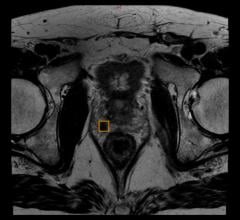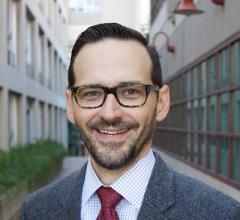
July 8, 2009 - As part of its ongoing support of nuclear medicine and molecular imaging research, SNM—an international scientific and professional organization of more than 17,000 members dedicated to promoting the practical applications, technology and science of molecular imaging and nuclear medicine—awarded $175,000 in research grants through its Education and Research Foundation at the society's 56th Annual Meeting, held June 13–17 in Toronto. "These awards fuel the future of molecular imaging and nuclear medicine research and encourage young clinicians and scientists to excel in their chosen field," said Alexander J.B. McEwan, M.D., past chair of SNM's Awards Committee. "We appreciate the ongoing support of individual donors, which paves the way for the next generation of researchers to further improve medical diagnosis and therapy." "Advancing molecular imaging and therapy is an essential step in achieving more accurate and timely diagnoses," said Robert W. Atcher, Ph.D., M.B.A., current chair of SNM's Awards Committee. "SNM is proud to support research that will provide physicians with better tools to understand disease and monitor treatments." The Molecular Imaging Research Grant for Junior Medical Faculty awards $100,000 over two years to support one junior faculty member in an academic research setting to engage them in molecular imaging research for diagnostic or therapeutic applications. The grant was presented to Laura L. Horky, M.D., Ph.D., of Brigham and Women's Hospital in Boston, Mass., to support research using FLT-PET and FET-PET for the early assessment of glioblastoma multiforme—the most common and aggressive type of brain tumor. The Postdoctoral Molecular Imaging Scholar Program award provides $60,000 over two years in support of a postdoctoral fellow to promote integration of molecular imaging into their research activity. This year's award went to Changquing Li, Ph.D., of the University of California, Davis, to support research of the simultaneous use of PET and optical imaging, which could hold promise for patients with many devastating diseases. The SNM/Covidien Seed Grant in Nuclear Medicine Research—which awards $25,000 to a researcher conducting a new and innovative pilot project that shows potential for future support from foundations, corporations or government agencies—was given to Rama Pichika, Ph.D., of the University of California, San Diego, for molecular imaging of early Alzheimer's disease. Two pilot research grants of $25,000 each were presented to assist basic or clinical scientists in the early stages of their careers in conducting research that may lead to further funding. Ruth Lim, M.D., of Massachusetts General Hospital in Boston was awarded the Mitzi and William Blahd, M.D., Pilot Research Grant, to compare molecular imaging methods of low-grade cartilage tumors. Wawrzyniec Lawrence Dobrucki, Ph.D., of Yale University in New Haven, Conn., received the SNM Pilot Research Grant for the use of noninvasive SPECT-CT to detect diabetes after myocardial infarction (heart attack). Delphine Chen, M.D., of the Mallinckrodt Institute of Radiology at the Washington University School of Medicine in St. Louis, Mo., received the Mark Tetalman Award—a $5,000 award honoring the efforts and accomplishments of a researcher age 36 years or younger who is no more than seven years from obtaining a Ph.D. or certification in nuclear medicine or nuclear radiology. The SNM Student Fellowship Awards support students' clinical and basic research in molecular imaging and nuclear medicine by offering $3,000 to fund full-time research for up to three months. The Bradley-Alavi Student Fellowship Award, given to the top-ranked candidate, was awarded to Amanda Weinmann of the University of Minnesota Medical School in Minneapolis for research in molecular breast imaging. Other Student Fellowship Award recipients included: • Chiun-Wei Huang of the University of Southern California Molecular Imaging Center in Los Angeles for prostate cancer research; • Landon Locke of the University of Virginia in Charlottesville, Va., for multimodality imaging of leukocytes—white blood cells that fight infectious disease; and • Lauren Sasportas of the Stanford University School of Medicine in Stanford, Calif., for work in revascularization—or increasing blood flow—after tumor irradiation. For more Information: www.snm.org


 July 02, 2024
July 02, 2024 








